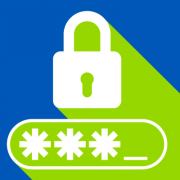What’s Next? Webroot’s 2019 Cybersecurity Predictions
At Webroot, we stay ahead of cybersecurity trends in order to keep our customers up-to-date and secure. As the end of the year approaches, our team of experts has gathered their top cybersecurity predictions for 2019. What threats and changes should you brace for?
General Data Protection Regulation Penalties
“A large US-based tech company will get hammered by the new GDPR fines.” – Megan Shields, Webroot Associate General Counsel
When the General Data Protection Regulation (GDPR) became law in the EU last May, many businesses scrambled to implement the required privacy protections. In anticipation of this challenge for businesses, it seemed as though the Data Protection Authorities (the governing organizations overseeing GDPR compliance) were giving them time to adjust to the new regulations. However, it appears that time has passed. European Data Protection Supervisor Giovanni Buttarelli spoke with Reuters in October and said the time for issuing penalizations is near. With GDPR privacy protection responsibilities now incumbent upon large tech companies with millions—if not billions—of users, as well as small to medium-sized businesses, noncompliance could mean huge penalties.
GDPR fines will depend on the specifics of each infringement, but companies could face damages of up to 4% of their worldwide annual turnover, or up to 20 million Euros, whichever is greater. For example, if the GDPR had been in place during the 2013 Yahoo breach affecting 3 billion users, Yahoo could have faced anywhere from $80 million to $160 million in fines. It’s also important to note that Buttarelli specifically mentions the potential for bans on processing personal data, at Data Protection Authorities’ discretion, which would effectively suspend a company’s data flows inside the EU.
AI Disruption
“Further adoption of AI leading to automation of professions involving low social intelligence and creativity. It will also give birth to more advanced social engineering attacks.” – Paul Barnes, Webroot Sr. Director of Product Strategy
The Fouth Industrial Revolution is here and the markets are beginning to feel it. Machine learning algorithms and applied artificial intelligence programs are already infiltrating and disrupting top industries. Several of the largest financial institutions in the world have integrated artificial intelligence into aspects of their businesses. Often these programs use natural language processing—giving them the ability to handle customer-facing roles more easily—to boost productivity.
From a risk perspective, new voice manipulation techniques and face mapping technologies, in conjunction with other AI disciplines, will usher in a new dawn of social engineering that could be used in advanced spear-phishing attacks to influence political campaigns or even policy makers directly.
AI Will Be Crucial to the Survival of Small Businesses
“AI and machine learning will continue to be the best way to respond to velocity and volume of malware attacks aimed at SMBs and MSP partners.” – George Anderson, Product Marketing Director
Our threat researchers don’t anticipate a decline in threat volume for small businesses in the coming year. Precise attacks, like those targeting RDP tools, have been on the rise and show no signs of tapering. Beyond that, the sheer volume of data handled by businesses of all types of small businesses raises the probability and likely severity of a breach.
If small and medium-sized businesses want to keep their IT teams from being inundated and overrun with alerts, false positives, and remediation requests, they’ll be forced to work AI and machine learning into their security solutions. Only machine learning can automate security intelligence accurately and effectively enough to enable categorization and proactive threat detection in near real time. By taking advantage of cloud computing platforms like Amazon Web Services, machine learning has the capability to scale with the increasing volume and complexity modern attacks, while remaining within reach in terms of price.
Ransomware is Out, Cryptojacking is In
“We’ll see a continued decline in commodity ransomware prevalence. While ransomware won’t disappear, endpoint solutions are better geared to defend against suspicious ransom-esque actions and, as such, malware authors will turn to either more targeted attacks or more subtle cryptocurrency mining alternatives.” – Eric Klonowski, Webroot Principal Threat Research Analyst
Although we’re unlikely to see the true death of ransomware, it does seem to be in decline. This is due in large part to the success of cryptocurrency and the overwhelming demand for the large amounts of computing power required for cryptomining. Hackers have seized upon this as a less risky alternative to ransomware, leading to the emergence of cryptojacking.
Cryptojacking is the now too-common practice of injecting software into an unsuspecting system and using its latent processing power to mine for cryptocurrencies. This resource theft drags systems down, but is often stealthy enough to go undetected. We are beginning to feel the pinch of cryptojacking in critical systems, with a cryptomining operation recently being discovered on the network of a water utility system in Europe. This trend is on track to continue into the New Year, with detected attacks increasing by 141% in the first half of 2018 alone.
Targeted Attacks
“Attacks will become more targeted. In 2018, ransomware took a back seat to cryptominers and banking Trojans to an extent, and we will continue see more targeted and calculated extortion of victims, as seen with the Dridex group. The balance between cryptominers and ransomware is dependent upon the price of cryptocurrency (most notably Bitcoin), but the money-making model of cryptominers favors its continued use.” – Jason Davison, Webroot Advanced Threat Research Analyst
The prominence of cryptojacking in cybercrime circles means that, when ransomware appears in the headlines, it will be for calculated, highly-targeted attacks. Cybercriminas are now researching systems ahead of time, often through backdoor access, enabling them to encrypt their ransomware against the specific antivirus applications put in place to detect it.
Government bodies and healthcare systems are prime candidates for targeted attacks, since they handle sensitive data from large swaths of the population. These attacks often have costs far beyond the ransom itself. The City of Atlanta is currently dealing with $17 million in post-breach costs. (Their perpetrators asked for $51,000 in Bitcoin, which the city refused to pay.)
The private sector won’t be spared from targeting, either. A recent Dharma Bip ransomware attack on a brewery involved attackers posting the brewery’s job listing on an international hiring website and submitting a resume attachment with a powerful ransomware payload.
Zero Day Vulnerabilities
“Because the cost of exploitation has risen so dramatically over the course of the last decade, we’ll continue to see a drop in the use of zero days in the wild (as well as associated private exploit leaks). Without a doubt, state actors will continue to hoard these for use on the highest-value targets, but expect to see a stop in Shadowbrokers-esqueoccurrences. Leaks probably served as a powerful wake-up call internally with regards to access to these utilities (or perhaps where they’re left behind). – Eric Klonowski, Webroot Principal Threat Research Analyst
Though the cost of effective, zero-day exploits is rising and demand for these exploits has never been higher, we predict a decrease in high-profile breaches. Invariably, as large software systems become more adept at preventing exploitation, the amount of expertise required to identify valuable software vulnerabilities increases with it. Between organizations like the Zero Day Initiative working to keep these flaws out of the hands of hackers and governmental bodies and intelligence agencies stockpiling security flaws for cyber warfare purposes, we are likely to see fewer zero day exploits in the coming year.
However, with the average time between the initial private discovery and the public disclosure of a zero day vulnerability being about 6.9 years, we may just need to wait before we hear about it.
The take-home? Pay attention, stay focused, and keep an eye on this space for up-to-the-minute information about cybersecurity issues as they arise.
This article was provided by our service partner : Webroot









